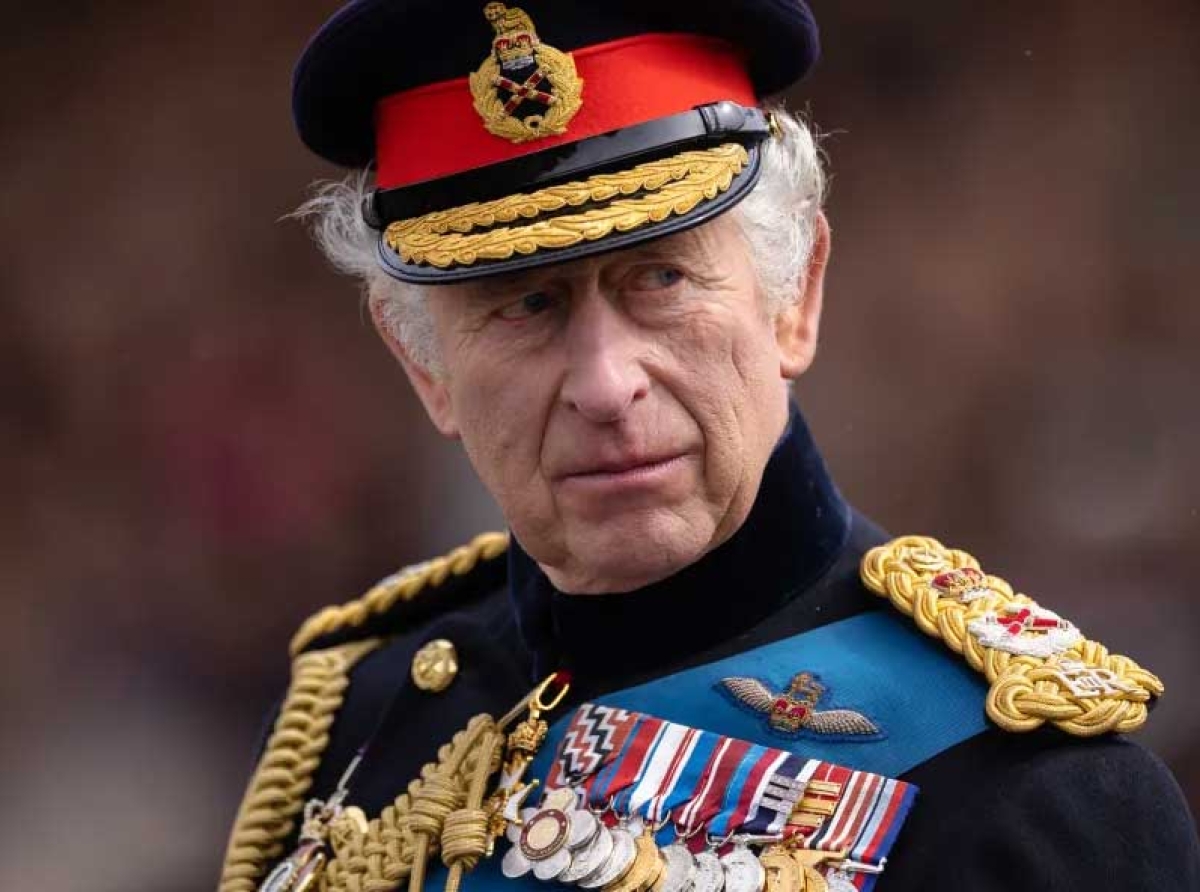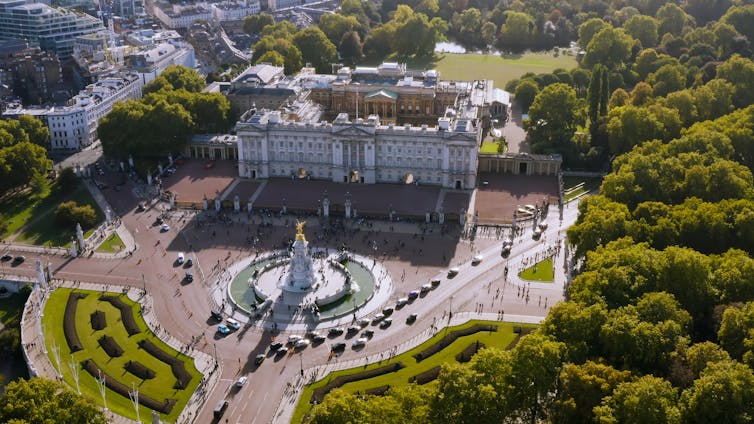Did the king just get a pay rise? How the crown estate and the royal family’s income work

The crown estate has just published its accounts for the last year, revealing record profits. This news was accompanied by indignant headlines about a massive pay rise for the royal family.
But behind these headlines is a much more complex picture. And as with so many aspects of the British monarchy, some very arcane laws and institutions are at work.
Despite its name, the crown estate is not under the direct control of either the palace or the British government. It is a statutory corporation with an independent commercial mandate. A board of crown estate commissioners manage the estate’s holdings – an increasingly lucrative portfolio of land and property as well as most of the UK’s seabed stretching 12 nautical miles from the mainland. This structure was established by the Crown Estate Act 1961.
The estate’s net profits go to the Treasury. But under an agreement struck between the royal household and the coalition government of David Cameron, a fixed proportion of them are transferred to the palace.
Known as the sovereign grant, it funds the monarch’s official duties, including royal travel and the upkeep of palaces. The latest figures show that the grant will rise to £132 million next year, up from £86 million.
Technically, these assets are the hereditary possessions of the sovereign held “in right of the crown”, a concept dating back to the Norman conquest. In practice, this means they are the corporate possessions of the crown rather than the personal assets of the king.
In 1760, George III surrendered the revenues of the crown estates to the British government in return for an annual payment to cover royal expenses, the so-called civil list. During Queen Elizabeth II’s reign, the palace found itself caught between seeking to prevent inflationary pressures eroding the value of the civil list, and wanting to avoid the sort of public scrutiny that might accompany a request for a significant increase in its amount.
There is a fine balance between the need to fund the monarchy (and all the historic buildings and monuments associated), and the political sensitivity of the royal family asking the government for more money. Under these circumstances, Cameron and his chancellor, George Osborne, must have appeared like fairy godfathers when they proposed the new funding formula which became law in Sovereign Grant Act of 2011.
Under this act, the sovereign grant would cover what had previously been the civil list, as well as three separate grants-in-aid from the government. These were for the specific purposes of maintaining the royal palaces, royal communications and royal travel.
Its amount was set as a percentage of the net surplus generated by the crown estates two years previously (initially 15%). This promised to provide the palace with an income stream which would grow in line with the general health of the economy, and hence avoid adverse public comment.
Osborne’s announcement of the scheme at a time of austerity appeared to threaten a reduction in royal income. Yet, in fact, the arrangement has proved to be more generous than anyone could have imagined.
Growing profits
Far from being a barometer of the general health of the UK economy, the crown estate’s underlying profits have increased massively over the last couple of years, from £360 million in 2021-22, to £643 million in 2022-23 and a staggering £1.5 billion in 2023-24.
Much of this growth is due to investment in renewable energy sources (such as offshore wind) on the sea bed. The estate’s success in this area has earned it the role of partner with the government’s new Great British Energy in an initiative to boost the number of wind farms.

The short-term challenge for King Charles is how he will justify receiving the significant increase in the sovereign grant. Over the past decade, the answer has largely been the urgent need to repair and restore the royal residences. But perhaps he should be concerned with more than just crumbling physical infrastructure.
As a bureaucracy, the palace has sometimes given the impression of being rather improvised and amateurish. Despite her decades-long pivotal role within the British constitution, when then-prime minister Boris Johnson formally advised Queen Elizabeth II to prorogue parliament (end the parliamentary session) in August 2019, she did so apparently without much deliberation at all. The prorogation was ruled unlawful less than a month later by the Supreme Court.
With democracies around the world assailed by charlatans and pound-shop authoritarians, the UK arguably needs its head of state to respond to crises in a more considered and deliberative manner. A good use for some of the additional funds would be the creation of a proper constitutional unit within the palace.
No magic formula
The longer-term dilemma for the king is that the funding formula agreed by Cameron and Osborne seems patently unfit for purpose. It has proved impossible to adhere consistently to a particular percentage of crown estate profits when setting the value of the sovereign grant.
In 2016, the 15% which had initially been agreed was increased to 25%, supposedly for 10 years from 2017, in order to pay for repairs to Buckingham Palace. But in July last year, it was announced that the figure would fall to 12% in response to the crown estate’s soaring revenues.
Even with that reduction, the steep increase in the actual value of the sovereign grant has left the royal family exposed to the sort of embarrassing headlines the Cameron and Osborne plan was supposed to avoid. So expect a further reduction if the profits of the crown estate continue to climb.
The moral of the story seems to be that no magic funding formula can or should spare the palace from the task of having regular conversations with the British government about the funding it requires. These would help to avoid large and arbitrary fluctuations in the value of the sovereign grant, and allow the palace to make a clear case about what it contributes to public life – and how it should be funded.
Philip Murphy, Director of the Institute of Commonwealth Studies and Professor of British and Commonwealth History, School of Advanced Study, University of London
This article is republished from The Conversation under a Creative Commons license. Read the original article.

 Ar
Ar  En
En